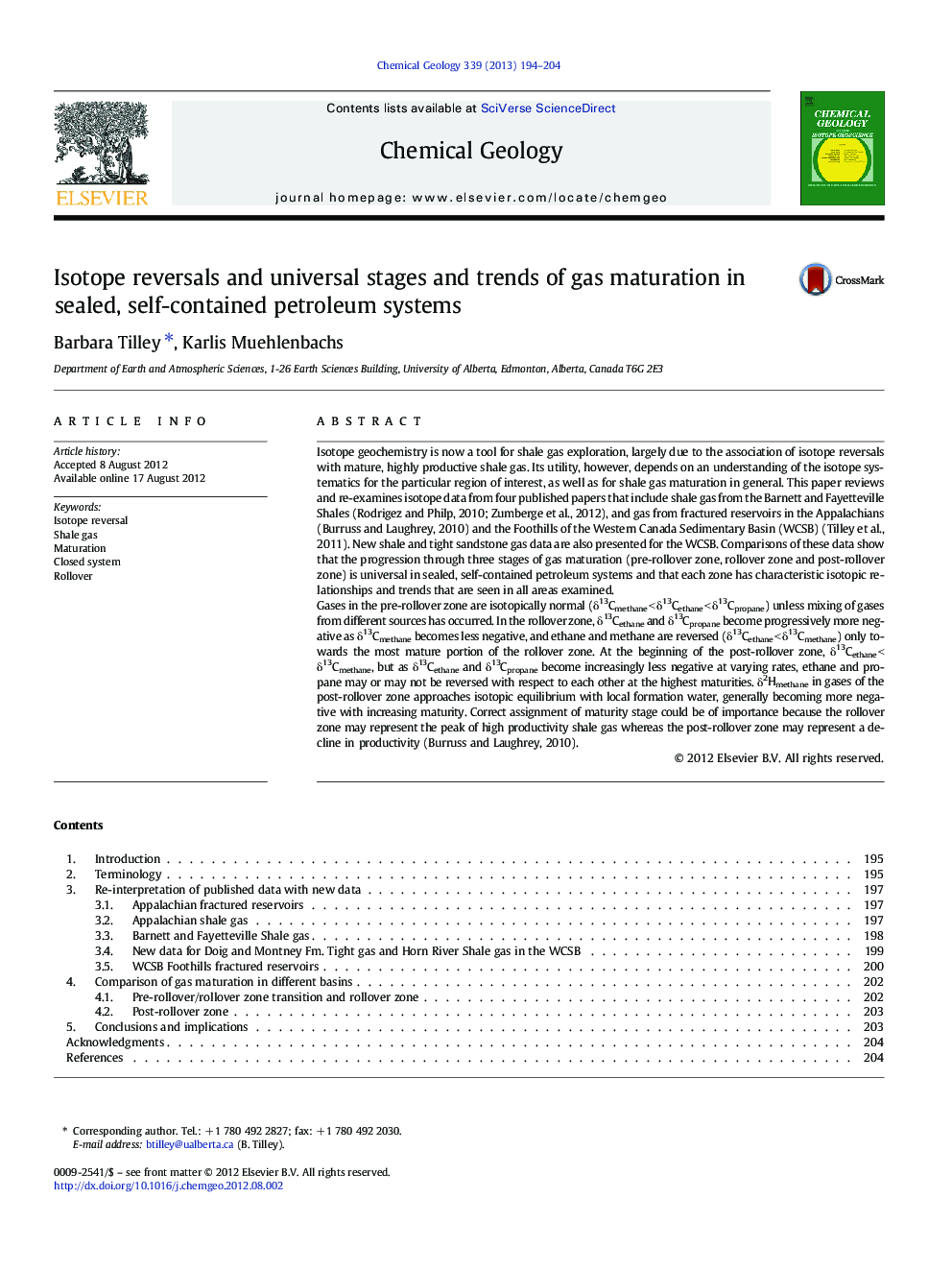| Article ID | Journal | Published Year | Pages | File Type |
|---|---|---|---|---|
| 4699138 | Chemical Geology | 2013 | 11 Pages |
Isotope geochemistry is now a tool for shale gas exploration, largely due to the association of isotope reversals with mature, highly productive shale gas. Its utility, however, depends on an understanding of the isotope systematics for the particular region of interest, as well as for shale gas maturation in general. This paper reviews and re-examines isotope data from four published papers that include shale gas from the Barnett and Fayetteville Shales (Rodrigez and Philp, 2010; Zumberge et al., 2012), and gas from fractured reservoirs in the Appalachians (Burruss and Laughrey, 2010) and the Foothills of the Western Canada Sedimentary Basin (WCSB) (Tilley et al., 2011). New shale and tight sandstone gas data are also presented for the WCSB. Comparisons of these data show that the progression through three stages of gas maturation (pre-rollover zone, rollover zone and post-rollover zone) is universal in sealed, self-contained petroleum systems and that each zone has characteristic isotopic relationships and trends that are seen in all areas examined.Gases in the pre-rollover zone are isotopically normal (δ13Cmethane < δ13Cethane < δ13Cpropane) unless mixing of gases from different sources has occurred. In the rollover zone, δ13Cethane and δ13Cpropane become progressively more negative as δ13Cmethane becomes less negative, and ethane and methane are reversed (δ13Cethane < δ13Cmethane) only towards the most mature portion of the rollover zone. At the beginning of the post-rollover zone, δ13Cethane < δ13Cmethane, but as δ13Cethane and δ13Cpropane become increasingly less negative at varying rates, ethane and propane may or may not be reversed with respect to each other at the highest maturities. δ2Hmethane in gases of the post-rollover zone approaches isotopic equilibrium with local formation water, generally becoming more negative with increasing maturity. Correct assignment of maturity stage could be of importance because the rollover zone may represent the peak of high productivity shale gas whereas the post-rollover zone may represent a decline in productivity (Burruss and Laughrey, 2010).
► Re-examination of gas isotope data from the Appalachians, Barnett and Fayetteville Shales and the WCSB ► Shale gas progresses through three distinct isotopic stages of gas maturation. ► The three stages of gas maturation are pre-rollover, rollover and post-rollover. ► These three maturation stages are unique to sealed, self-contained petroleum systems.
